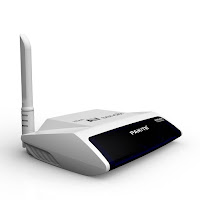Wireless technology is seemingly ubiquitous, but many people still
use tangles of cables to
connect TV sets to cable outlets. Homes that
have more TVs than cable outlets or in situations where an outlet is far
away from the TV, transmitting cable wirelessly can be a great solution
— not to mention a terrific way to clear up all those cords.
Transmitters are easy to
set up and use, banishing messy wires for good.
Wireless Cable Transmission to a TV
To send cable signals to a TV, users can hook up a
wireless video transmitter. Most transmitter receivers can pick up signals from 50 to 100 yards away.
Necessary Supplies
Wireless video transmitters(
what is it?) have two components, a transmitter and a
receiver. The transmitter hooks up to a video source such as a
cable box,
DVD player, or Blu-ray player, and the receiver hooks up to the
TV.
There two kinds of wireless transmitters available, RCA
transmitters and
HDMI transmitters. RCA systems, such as the RF-Link
Wireless Audio/Video System and the Terk Leapfrog Wireless Audio/Video
System, connect to TVs,
set top boxes,
and other video sources using three-pronged RCA cables, which are
compatible with most TV models.
HDMI transmitters, such as the
PAKITE Wireless HDMI Digital Kit, connect to other devices using HDMI cables, which can transmit HD video signals.
Setup Steps
To set up the system, plug the receiver into the RCA or HDMI port
on the TV. Plug the cable box into the transmitter. If the transmitter
has multiple inputs, then users can also connect other video devices,
such as Blu-ray players and video streamers.
Article from:
http://www.ebay.com/gds/How-to-Transmit-Cable-TV-Wirelessly-/10000000205355025/g.html
Recommend reading:
How to Connect a PC to a TV by Wireless ?
PAT-580 5.8GHz HDMI Wireless TV Transmitter and receiver Specification | PAKITE
How to Convert a Home Theater to Wireless
 AV is a kinds of Analog Audio Video Jack, its professional Jack for AV transmission, also you can find Cable Box/Converter Box/set-top box, DVD and Satellite all has this type Jack.
AV is a kinds of Analog Audio Video Jack, its professional Jack for AV transmission, also you can find Cable Box/Converter Box/set-top box, DVD and Satellite all has this type Jack.









